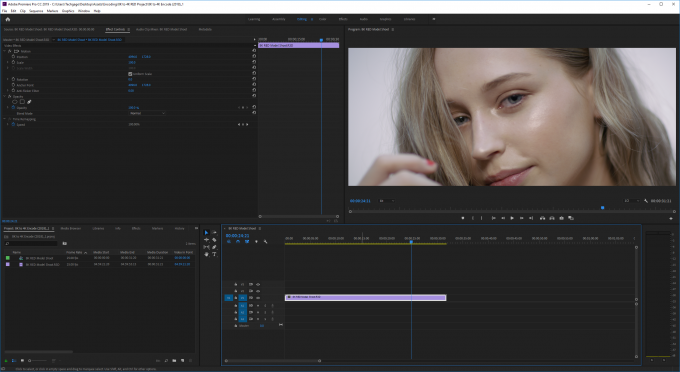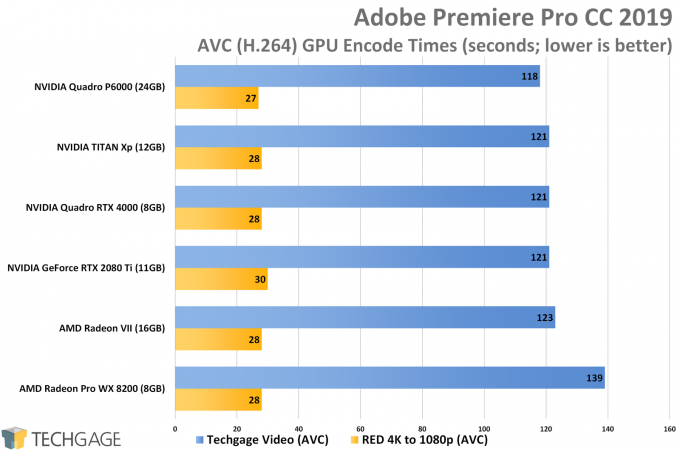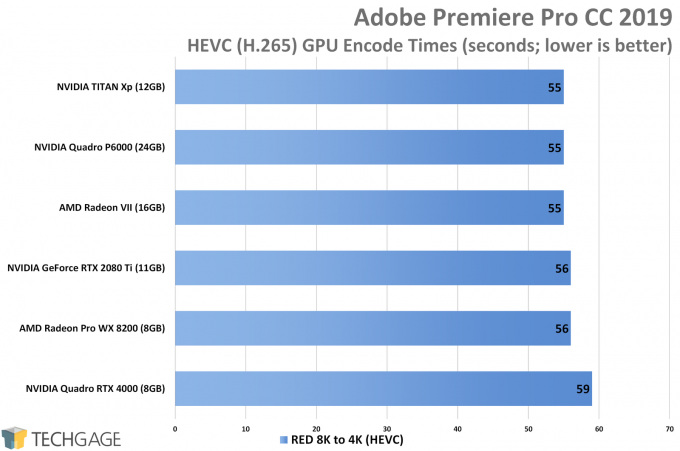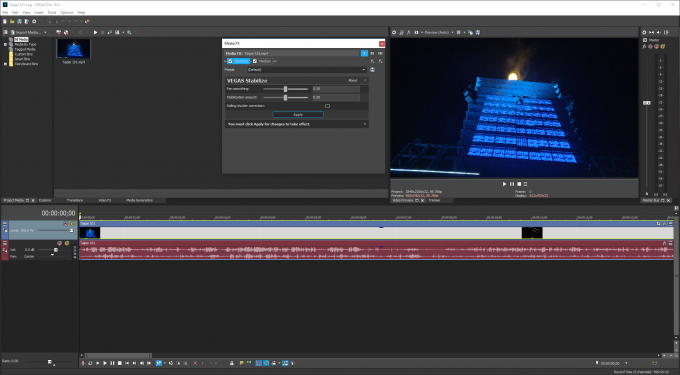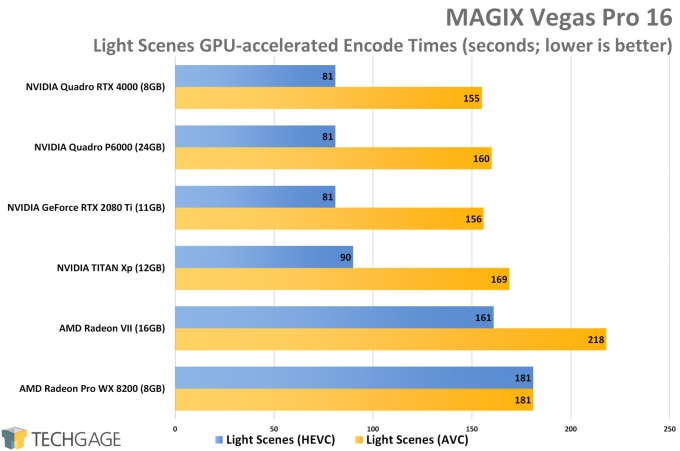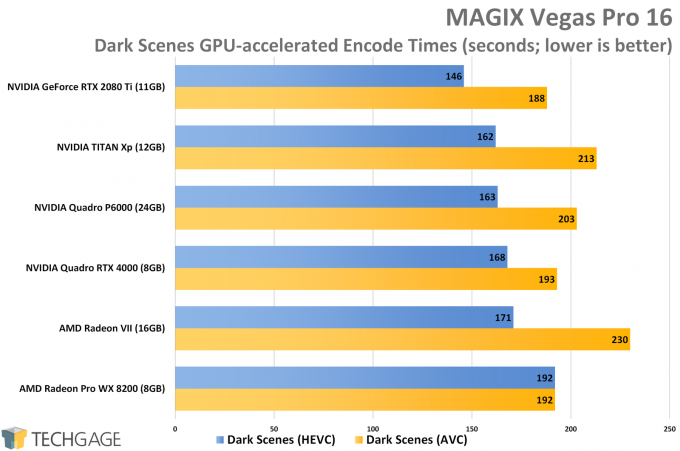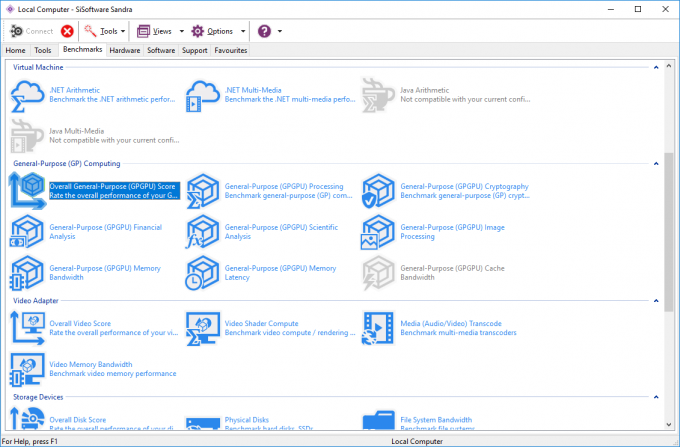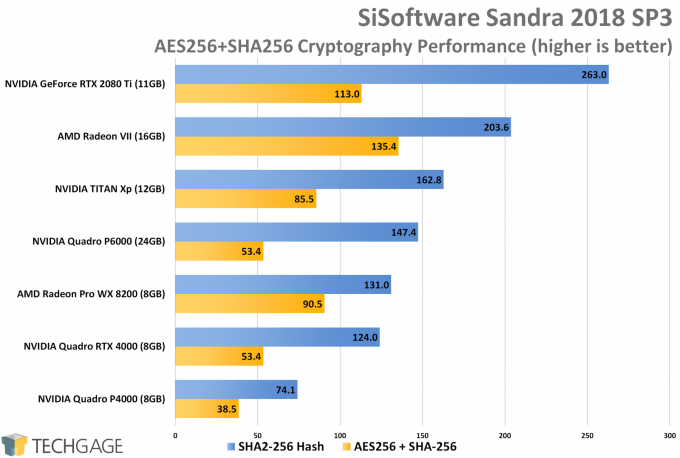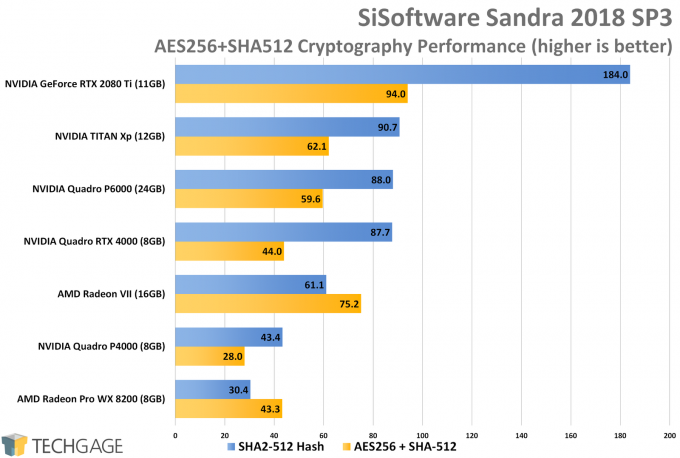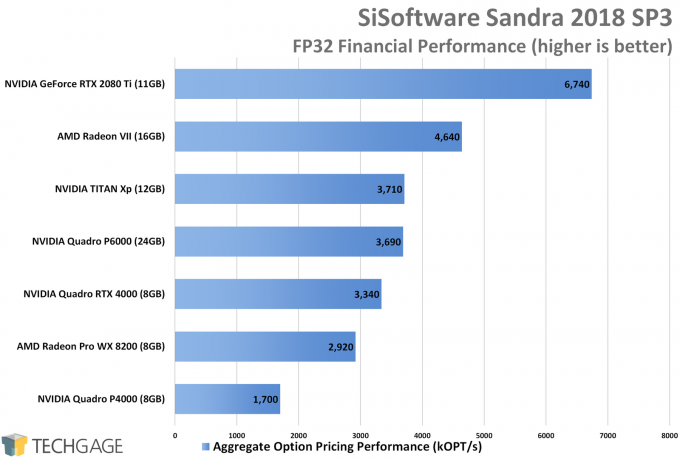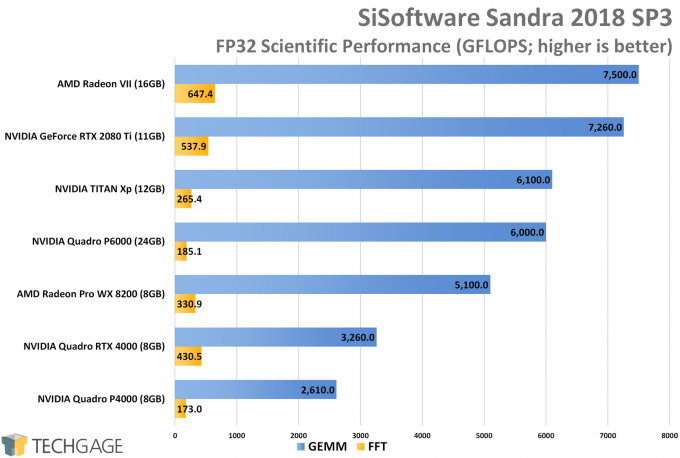- Qualcomm Launches Snapdragon 4 Gen 2 Mobile Platform
- AMD Launches Ryzen PRO 7000 Series Mobile & Desktop Platform
- Intel Launches Sleek Single-Slot Arc Pro A60 Workstation Graphics Card
- NVIDIA Announces Latest Ada Lovelace Additions: GeForce RTX 4060 Ti & RTX 4060
- Maxon Redshift With AMD Radeon GPU Rendering Support Now Available
NVIDIA Quadro RTX 4000 Review
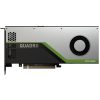
NVIDIA’s Turing-infused Quadro RTX 4000 sets out to be a super-fast performer for its $900 price tag, but it also brings a couple of tricks. Those include some RTX special features, like Tensor and RT cores, which already come in addition to architectural enhancements that helps the card leap far ahead of the older P4000.
Page 2 – Adobe Premiere Pro, MAGIX Vegas & Sandra: Crypto, Financial & Scientific
Both Premiere Pro and Vegas require a bit more explaining than the others, so we’re going to wrap them into the same section. The results here were plucked from our Radeon VII compute article. We were going to add P4000 here, until yet another identical result made it seem pointless. So, let’s explain.
With our latest round of Premiere Pro testing, no smaller cards were tested, which means the results for all of the cards are virtually the same. This is pretty much expected behavior based on previous reviews, but it’s unfortunate as we can’t deliver truly useful results. This behavior has forced us to update and think differently about the tests.
With Premiere Pro, we plan on adding a playback test at some point in the future (it takes a lot of time to get it right), as that’s going to be more useful than straight encodes. That said, while the GPU is going to be engaged in most high-res encodes, it will still perform like another high-end card (eg: RTX 4000 vs. P4000 vs. TITAN Xp vs. WX 8200).
One aspect to consider when comparing pro cards to gaming ones is that for guaranteed 10-bit color support, workstation cards are needed (the same applies to AMD as well as NVIDIA). Photoshop requires a workstation card to output 10-bit color, though many other apps are fine on gaming cards. The same 10-bit rule applies to Premiere Pro, but it might not be in all cases. It is needlessly difficult to find hard information on 10-bit color support with gaming and pro cards. Maybe on purpose.
With MAGIX Vegas, the issue isn’t the lack of scaling, but something broken on the NVIDIA side (which could be driver-related). After our Radeon VII compute article was posted, we spent quite a bit of time completely overhauling our testing script, which included the addition of a playback test. However, we’ve been unable to make actual use of it at this point because the software won’t use NVIDIA GPUs properly when using common FX filters, like Median and LUT. This affects both encode and playback.
The results below represent simple encodes with the use of no filters. This seemed to scale decently enough back in the day, but that was before we started to engage FX filters. Future performance results will be far more useful.
With Radeon VII performing so great in Vegas, that makes it seem like it’s the de facto choice. But it comes at the expense of NVIDIA performance being broken somehow. More than any other, Vegas is one piece of software that leaves me completely unaware of what performance is going to come out of it. We’ve seen NVIDIA take the lead before with previous versions, and now roles are reversed again.
There will be a lot more on this later. At the moment, it seems like the crux of the issue is that NVIDIA hardware isn’t working ideally in Vegas, and with Premiere Pro, we need to update our tests. There’s only so much time in the day, but this is definitely something we plan to tackle as soon as possible.
Cryptography, Financial & Scientific Performance
Those who use their processors for encryption purposes have got to love the fact that each new generation seems to bring upon even better acceleration. That’s both true on the CPU and GPU side. It’s clear from this chart that NVIDIA’s Turing-based graphics cards have a real advantage, with the 2080 Ti in particular soaring to the top of the list.
The Quadro RTX 4000 is off to a bit of a rough start thanks to the fact that the Radeon VII performs so well here, especially on the Hashing side of things. Compared to the last-gen Quadro P4000, though, NVIDIA has delivered a sweet boost to performance. But if encryption is seriously important to you, the VII looks to be the best value at the moment.
NVIDIA’s Turing architecture once again shows its strengths with this financial test, improving upon the Radeon VII by about 45%. It’s worth noting that the VII offers a good chunk of double-precision performance, which allows FP64 financial computation, but I’d wager that those who are using their GPU for such serious purposes are opting for cards designed for it (Instinct, Tesla).
We wrap up with another super-strong showing from the Radeon VII. We vividly remember when AMD tried to pass that card off as a gaming card. It’s clearly perfectly suited for compute workloads, albeit more specific ones than NVIDIA, as we’ll see over the course of this review.
Support our efforts! With ad revenue at an all-time low for written websites, we're relying more than ever on reader support to help us continue putting so much effort into this type of content. You can support us by becoming a Patron, or by using our Amazon shopping affiliate links listed through our articles. Thanks for your support!




